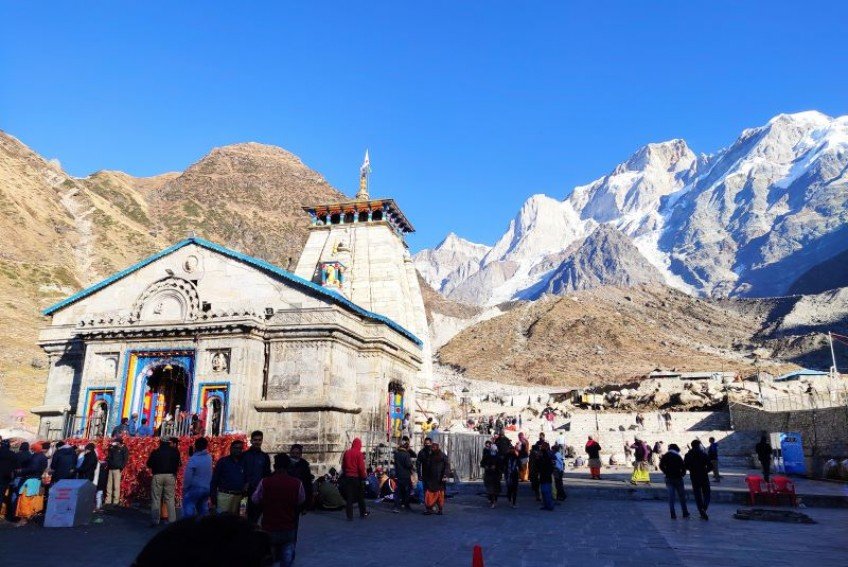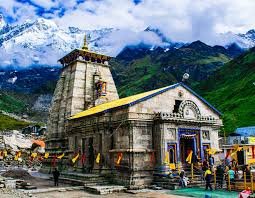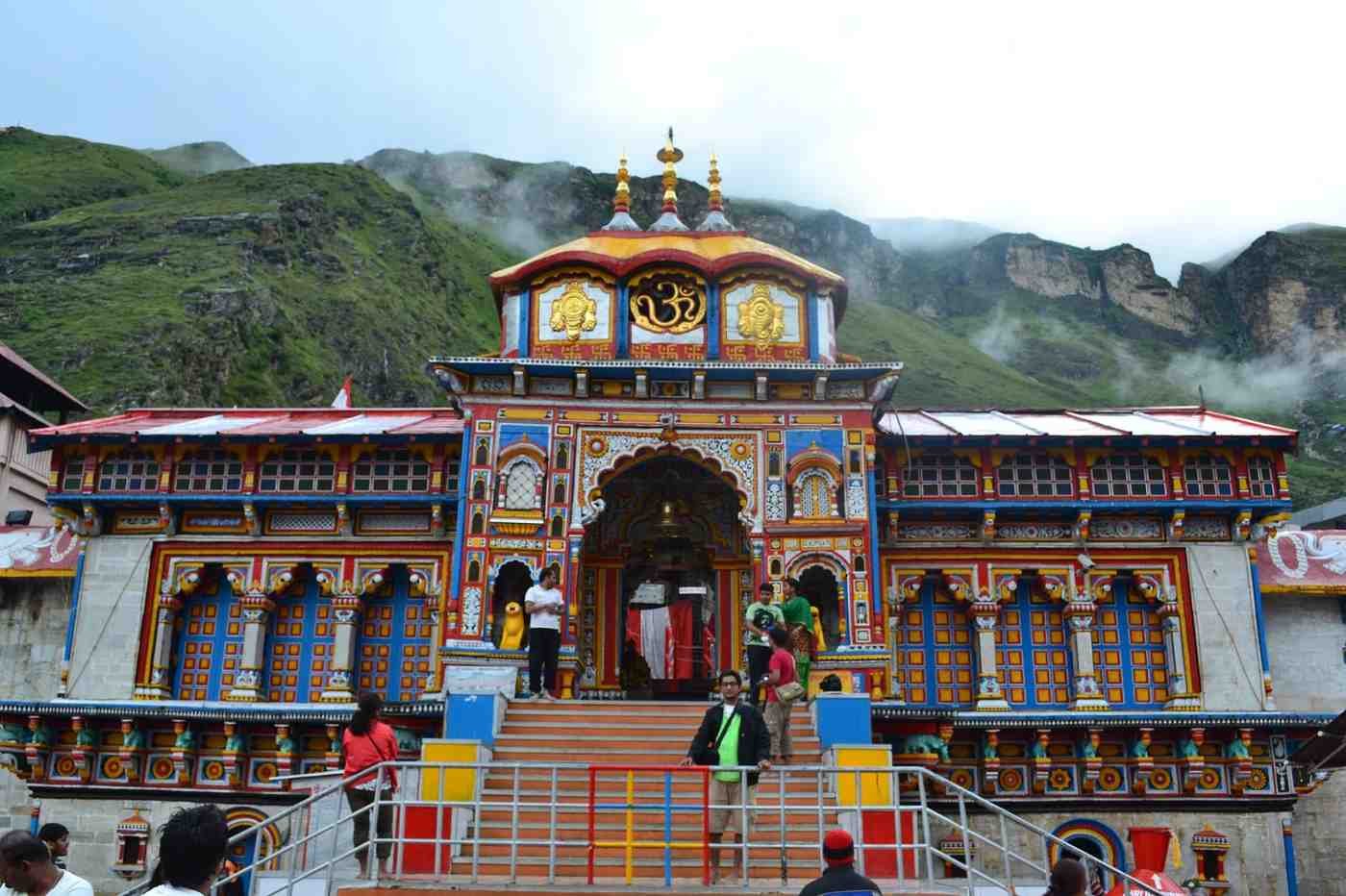Badrinath and Kedarnath are two of the most respected pilgrimage sites in India. They are located in the beautiful state of Uttarakhand, nestled in the Himalayas. Both shrines have great religious, cultural, and historical importance. They are part of the well-known Char Dham Yatra of Uttarakhand, drawing millions of visitors each year.
This article looks into the history of Badrinath and Kedarnath, their legends, and why these temples remain the spiritual center of India.
- Best Time to Visit
- The best time to visit both shrines is from May to June and from September to October. The weather is nice during these months, and the routes stay open.

History of Badrinath Temple
The Badrinath Temple, dedicated to Lord Vishnu, is one of the holiest shrines in Hinduism.
- Mythological Origin: According to Hindu scriptures, Lord Vishnu meditated here in severe cold. To protect him, Goddess Lakshmi turned into a Badri tree (Jujube tree), which is why the place is called Badrinath.
- Adi Shankaracharya’s Contribution: The temple was re-established in the 8th century by Adi Shankaracharya. He found the idol of Lord Badrinarayan in the Alaknanda River and installed it in a cave before moving it to the current temple.
- Architecture: The temple features a unique Garhwal style with a colorful facade and a 15-meter high structure topped by a conical dome. The idol of Lord Vishnu, made of black stone (Shaligram), is believed to be self-manifested.
Badrinath is one of the 108 Divya Desams, which are sacred shrines of Vishnu. This makes it particularly important for Vaishnavites.
- Discovery of the Idol: Adi Shankaracharya found a black stone idol of Lord Vishnu (Badrinarayan) in the Alaknanda River in the 8th century. He then placed it in the temple.

History of Kedarnath Temple
The Kedarnath Temple is dedicated to Lord Shiva. It is one of the 12 Jyotirlingas in India.
- Mythological Significance: The temple is connected to the Mahabharata. After the Kurukshetra war, the Pandavas sought forgiveness from Lord Shiva for killing their relatives. Lord Shiva, avoiding them, disguised himself as a bull and vanished into the ground at Kedarnath. His hump appeared at the temple site, while other parts of his body spread across different locations in the Himalayas. These sites are collectively known as the Panch Kedar.
- Ancient Construction: The Kedarnath Temple is thought to have been built by the Pandavas and later revived by Adi Shankaracharya in the 8th century.
- Architecture: The temple is made of large stone slabs resting on a big rectangular platform. It has endured for over 1,200 years, surviving natural disasters like floods and earthquakes.
- Mythological Significance: The temple is connected to the Mahabharata. After the Kurukshetra war, the Pandavas sought forgiveness from Lord Shiva for killing their relatives. Lord Shiva, avoiding them, disguised himself as a bull and vanished into the ground at Kedarnath. His hump appeared at the temple site, while other parts of his body spread across different locations in the Himalayas. These sites are collectively known as the Panch Kedar.
- Ancient Construction: The Kedarnath Temple is thought to have been built by the Pandavas and later revived by Adi Shankaracharya in the 8th century.
- Architecture: The temple is made of large stone slabs resting on a big rectangular platform. It has endured for over 1,200 years, surviving natural disasters like floods and earthquakes.
- Unique Architecture: Built at an altitude of 3,583 meters, the temple consists of massive stone blocks that do not use mortar. Despite harsh weather and natural disasters, the temple has endured for over a thousand years..

Cultural and Spiritual Importance
- Festivals: The temples stay open for only six months because of heavy snowfall. During this time, thousands of devotees take part in rituals, Aarti, and spiritual celebrations.
- Char Dham Yatra: Both temples belong to the Char Dham Yatra, which includes Yamunotri, Gangotri, Kedarnath, and Badrinath. This journey is seen as a path to salvation in Hinduism.
- Spiritual Beliefs: Badrinath symbolizes Lord Vishnu, the preserver, while Kedarnath represents Lord Shiva, the destroyer. Together, they show the balance of the universe..
- Spiritual Importance of Both Shrines
- Char Dham Pilgrimage. Badrinath and Kedarnath are two of the four holy dhams of Uttarakhand. Every Hindu hopes to visit them at least once in their lifetime.
- Balance of Vishnu and Shiva. These temples show the two energies of creation and destruction. Badrinath symbolizes preservation (Vishnu), while Kedarnath symbolizes dissolution (Shiva).
- Seasonal Pilgrimage. Both temples open in April and May and close in October and November because of heavy snowfall. During the closed months, rituals take place in nearby winter shrines: Joshimath for Badrinath and Ukhimath for Kedarnath..
- Spiritual Journey and Yatra
- Pilgrims often visit Kedarnath and Badrinath together because they are close to each other in Uttarakhand. The Char Dham Yatra traditionally starts at Yamunotri, then goes to Gangotri, followed by Kedarnath, and finally Badrinath. The yatra season begins in April or May and ends by October or November, as heavy snowfall makes access impossible in winter.
Conclusion
The history of the Badrinath and Kedarnath temples is deeply rooted in Hindu mythology and spirituality. These sacred shrines are places of worship and symbols of faith, endurance, and divine presence in the Himalayas. For devotees, visiting these temples is more than a pilgrimage; it is a life-changing spiritual journey.
If you plan to visit Uttarakhand, a trip to Badrinath and Kedarnath will connect you to centuries of history, legends, and divine blessings.


